The Cedar Log Cabin
The Story of Living In & Restoring a Settler's Log Cabin
Cat Pens & Tunnel
Need for Pens
When we first moved up there we had two cats. They were indoor only cats. When we went outside we would take the cats with us for walks. The real estate agent, who was the agent selling the cabin, very seriously warned us about animals that lived in the area that eat cats. They are called fishers (Martes pennanti). I am very grateful to that agent for telling us. She said one of her cats had been eaten by a fisher, and not long after we moved in, I heard the horrible sound of feral kittens being eaten by a fisher late at night in the woods behind. As it turned out, the mom cat survived, and two years later I would catch her and her latest kittens, and make them part of the family.
Now knowing about the fishers, I wanted to make a pen that the cats could use to go in and out on their own, that was very strong and secure. It was done in three phases. First phase, was to put the hole in the wall and use a steel dog cage attached to the wall. Second phase, was to make a proper pen that went with the feel of the cabin. Third phase, was to make a big log pen far from the cabin so the cats could be outside and have a sense of independence.
Stage 1
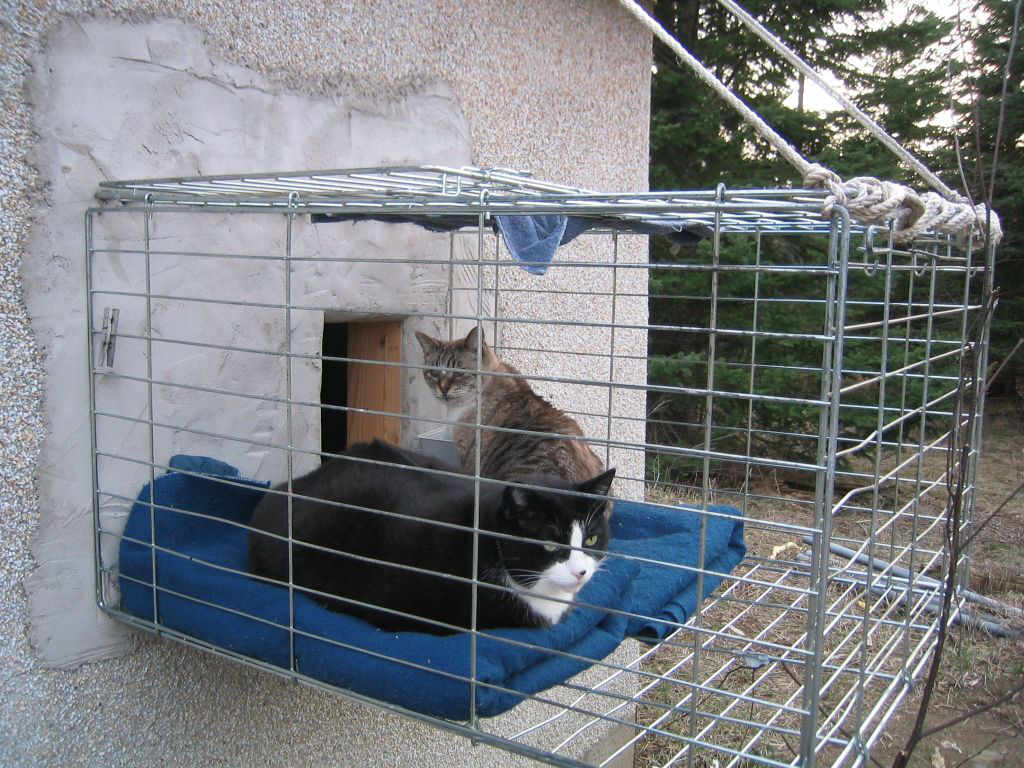
Stage one of the cat pen program complete. This was a dog cage screwed to the wall, with ropes to steady it. There had been a window where you see the parged cement inside the stone surfaced wall section where the pen is. This window was not in a good location, so it was filled in, and a hole to the outside installed for the cats to come and go as they pleased night or day, any season. I hung two layers of heavy cloth to act as doors to keep the cold air out. It worked fine. The Tuxedo cat is Cornelius, and the Lynx Point Siamese is Felemur who is 18 years old in this picture. Both were "rescue" cats.
Stage 2
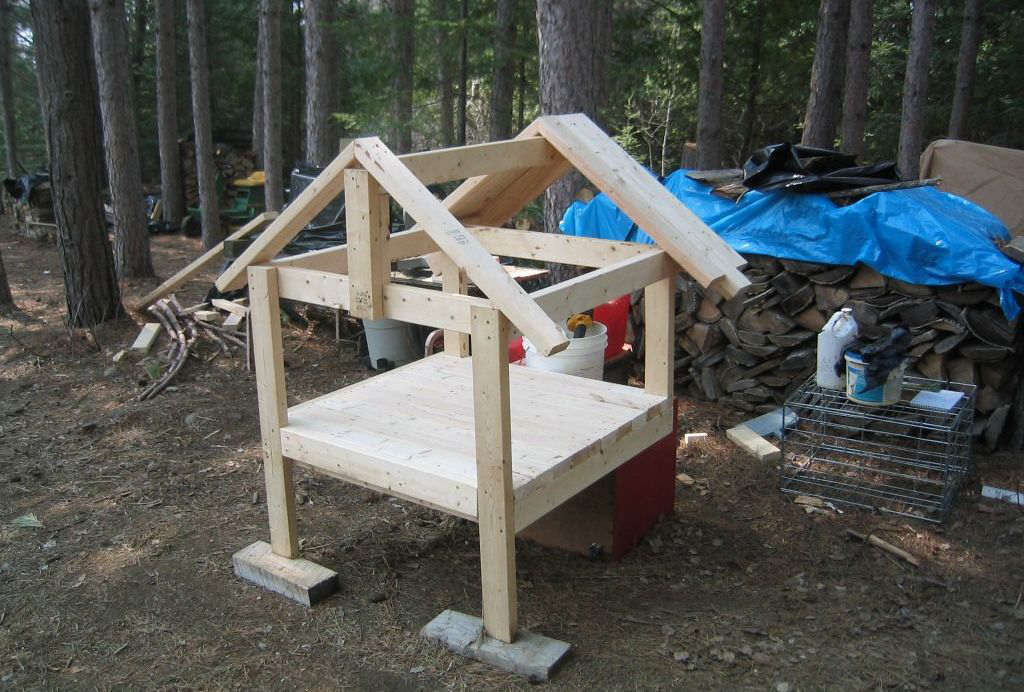
The frame of the cat pen that was to replace the dog cage. This was phase two. I wanted it so strong, that no animal could pull it apart and get in it or the cabin. Screwed, not nailed together.
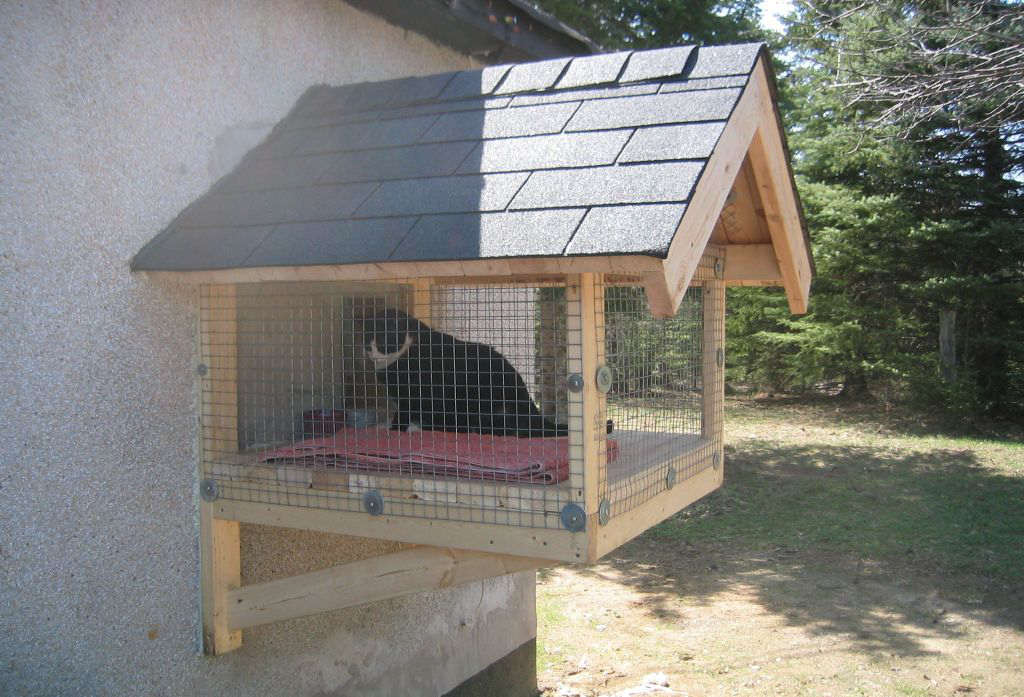
Just finished, installed and being inspected by the foreman. The cats loved this one, and spent long hours in it.
Stage 3
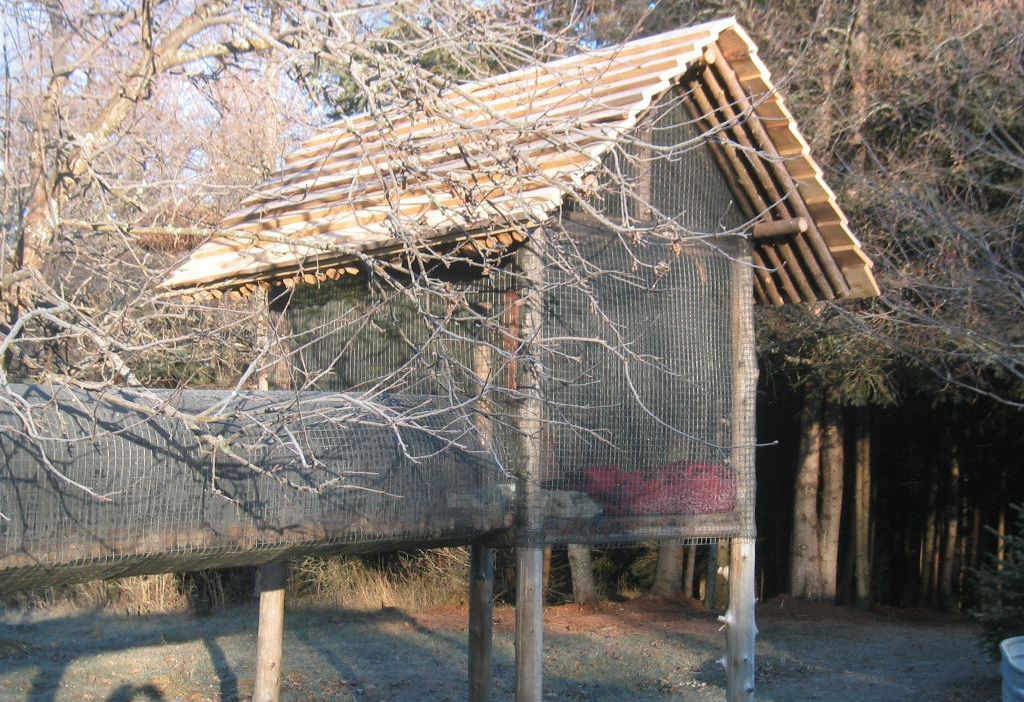
The final cat pen, with tunnel leading to it, from the stage two cat pen on the wall. The four main verticals are white cedar logs, while the rest is all white cedar branches with 1X6" overlapping boards for a roof. The tunnel and pen are all surrounded by 1" X 1” galvanized steel mesh, overlaid with screening to keep bugs out.
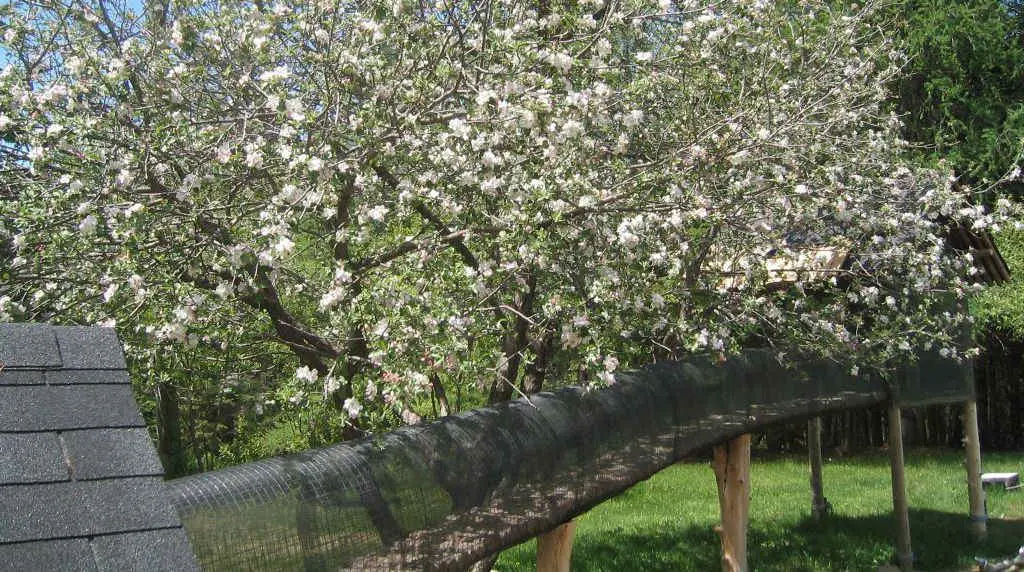
The tunnel connecting the pens, is made from a backbone of an “S” shaped white cedar log bolted to posts and both pens, with 14” sections of cedar branches screwed to the backbone, with 1" X 1” steel wire and screen looped over. The cats loved being in the tunnel as much as the pen.
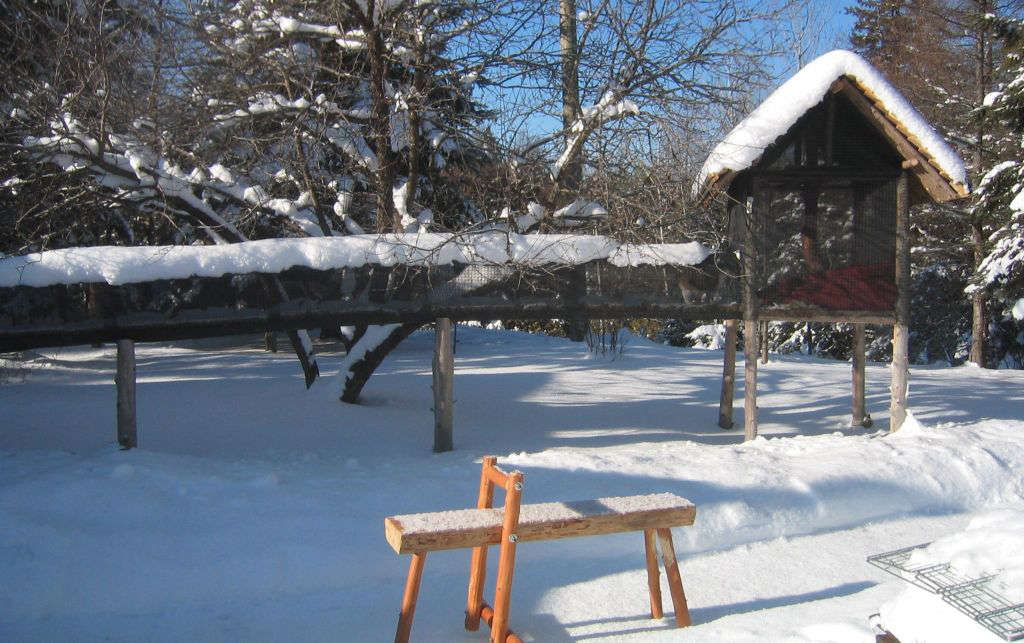
The pen and tunnel in winter. There is a cat (Mom) in the tunnel, just entering the pen. People were more taken with this pen and tunnel than anything else I made. I had strangers stop in, who were driving by to their cottages, who asked if they could take pictures.
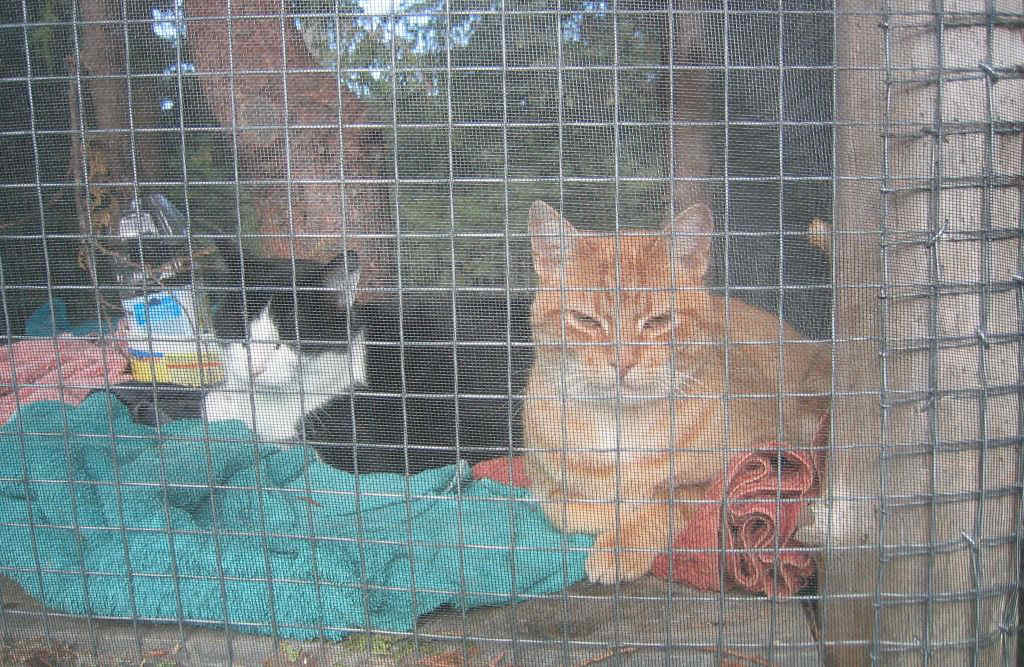
I used heavy duty galvanized 1X1” metal to keep the bigger animals out, and screening to keep the bugs out. There was a locked trap door in the floor I used to get inside to clean it out. It was so nice in there, and bug free (being made of cedar helped that), that I used to have a nap inside it with the cats the odd time after cleaning it on a nice day.
Share:
Why does this site have ads?
Originally the content in this site was a book that was sold through Amazon worldwide. However, I wanted this story available to everyone free of charge, so I made this website. The ads on the site help cover the cost of maintaining the site and keeping it available.
Google + profile
